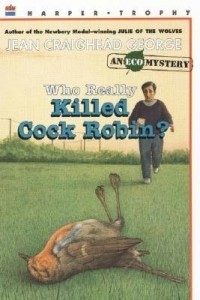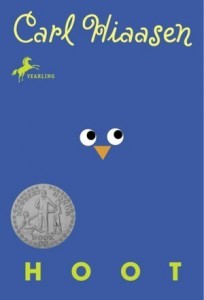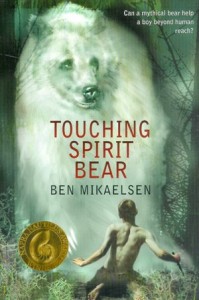Wrapping up our two weeks of Lorax-inspired environmental emphasis, how do children’s books specifically reflect growing concern about our care of the earth? Because of course they do. Any publisher will gravitate toward books that speak to a current issue, so expect to find plenty of books in your local school and public library about what we can do to take care of our planet. But some authors have deeper motivations. While we don’t want to sound conspiratorial, every interest group (and for practical purposes, we can include Christians) seeks to train the young in whatever values it deems important. After all, “Children are our future.” And, slow as it is, education has proven the most reliable way of cultivating cultural shifts.
Christian school and homeschool parents are not immune to the winds of change. Emily pointed out some ways that a healthy love and concern for the natural world can be affected by concerns that are not biblical and even anti-Christian. Her summary was excellent; what I’m offering now are specific examples of what we might call encroaching environmentalism in schools and libraries.
healthy love and concern for the natural world can be affected by concerns that are not biblical and even anti-Christian. Her summary was excellent; what I’m offering now are specific examples of what we might call encroaching environmentalism in schools and libraries.
Rachel Carson’s The Silent Spring was published in 1962 and became an instant best-seller. Ms. Carson’s target was chemical pesticides, which she claimed disrupted natural habitats and breeding cycles and wreaked havoc on nature generally. Her claims have been challenged as well as defended, and I’m not going there, but what’s beyond challenge is that Silent Spring set off an ongoing wave of concern about environmental issues. A lot of it was justified: throughout the seventies, stories of polluted rivers and dump sites like Love Canal (not a Coney Island ride) captured headlines in the news. That’s when I remember the first appearance of children’s books encouraging kids to clean up after themselves and “protect the environment.” At the picture-book level, the message was usually no more challenging than The Berenstain Bears Don’t Pollute (Anymore). For older readers, Jean Craighead George began a series of environmental mysteries such as Who Really Killed Cock Robin?, in which kids investigate why the birds or fish are dying and usually finger the local soap manufacturer (or whatever) who’s been dumping chemical waste in the river.
 Carl Hiassen has written an updated version of the environmental mystery genre, with the Newbery-honored Hoot, then Flush, Scat, and (coming soon) Chomp. Hiassen also writes adult detective fiction set in his native Florida, and while he’s tamed his material for kids, the characters and language in these novels are more “colorful” than many Christian parents would feel comfortable with. Other than that, there’s nothing wrong with kids trying to catch people who are illegally dumping human waste (Flush), and readers can at least debate the value of economic development when pitted against endangered species (Hoot and Scat).
Carl Hiassen has written an updated version of the environmental mystery genre, with the Newbery-honored Hoot, then Flush, Scat, and (coming soon) Chomp. Hiassen also writes adult detective fiction set in his native Florida, and while he’s tamed his material for kids, the characters and language in these novels are more “colorful” than many Christian parents would feel comfortable with. Other than that, there’s nothing wrong with kids trying to catch people who are illegally dumping human waste (Flush), and readers can at least debate the value of economic development when pitted against endangered species (Hoot and Scat).
When environmental concern rises to environmentalism, however, we’re on a new level. Here, as Emily mentioned, “sustainability” is the issue—not just cleaning up our messes, but cutting back on our consumption. We’re all for wise use of resources, but some advocates are pushing for cutting back to a degree that would impoverish rather than sustain. The manifesto for sustainability thinking is The Story of Stuff, a video that’s been mandatory viewing in schools across the USA for several years. Here students are told that the western world is consuming the world’s resources at an alarming rate, which means that the third world isn’t getting their share and we’re all going to run out eventually. There’s at least one critique online, such as this one, so interested students can compare the arguments and see which ones are the most convincing. “Sustainability” doesn’t make for gripping fiction, so I don’t know of any middle-grade or YA novels on the subject. That’s not true of the next level . . .
. . . Which comes close to, or actually embraces, something like earth-worship. Classic adventure stories for children typically  place young people (usually boys) in a natural setting and let them fight it out—with nature itself, or with natural perils combined with human adversaries. Roland Smith, Will Hobbs, and Gary Paulsen are masters of the genre, and they’re generally worthwhile reads, though I don’t recommend everything by Gary Paulsen. When nature assumes godlike or spiritual status, as in George’s Julie of the Wolves, young readers can get the wrong idea. Ben Mikaelson’s Touching Spirit Bear is another example: white civilization destroys the soul; getting in touch with the rhythms of the earth restores it. These stories find true wisdom in native cultures or animal totems, sailing close to a pagan worldview. And generally in contemporary children’s literature (adults too, for that matter), when a pagan view is contrasted with a Christian view, the latter always loses. Be wary of novels about the Salem witch trials; clashes with druids, shamans, or herbal healers; missionaries at any time confronting almost any native culture—the pagans tend to be the heroes. (One notable exception is The Perilous Gard.)
place young people (usually boys) in a natural setting and let them fight it out—with nature itself, or with natural perils combined with human adversaries. Roland Smith, Will Hobbs, and Gary Paulsen are masters of the genre, and they’re generally worthwhile reads, though I don’t recommend everything by Gary Paulsen. When nature assumes godlike or spiritual status, as in George’s Julie of the Wolves, young readers can get the wrong idea. Ben Mikaelson’s Touching Spirit Bear is another example: white civilization destroys the soul; getting in touch with the rhythms of the earth restores it. These stories find true wisdom in native cultures or animal totems, sailing close to a pagan worldview. And generally in contemporary children’s literature (adults too, for that matter), when a pagan view is contrasted with a Christian view, the latter always loses. Be wary of novels about the Salem witch trials; clashes with druids, shamans, or herbal healers; missionaries at any time confronting almost any native culture—the pagans tend to be the heroes. (One notable exception is The Perilous Gard.)
One final note: Christians should not be afraid of anything. It will not hurt a child to read Julie of the Wolves, especially if she is fairly strong in her own worldview. It may even help clarify that worldview by contrasting it with its opposite. Christians do need to be “wise as serpents,” i.e., aware of what’s going on in the world and how it stacks up against the truth. Apocalyptic forecasts of the oceans rising or falling, the earth warming or cooling, or general environmental disaster will never come true until God is ready, but environmentalism is probably here to stay, and wise parents will prepare their children for it.
Support our writers and help keep Redeemed Reader ad-free by joining the Redeemed Reader Fellowship.
Stay Up to Date!
Get the information you need to make wise choices about books for your children and teens.
Our weekly newsletter includes our latest reviews, related links from around the web, a featured book list, book trivia, and more. We never sell your information. You may unsubscribe at any time.
We'd love to hear from you!
Our comments are now limited to our members (both Silver and Golden Key). Members, you just need to log in with your normal log-in credentials!
Not a member yet? You can join the Silver Key ($2.99/month) for a free 2-week trial. Cancel at any time. Find out more about membership here.
1 Comments
Leave a Comment
You must be logged in to post a comment.


Thanks for your thoughtful summary of environmental fiction for kids. You may be interested in reviewing The Adventures of The Sizzling Six, Eco mystery series, by Claire Datnow. As the author, I am passionate about helping kids become wise stewards of our precious natural resources, that is why I write these books. I would be delighted to send you a copy for review. For more information please visit: http://www.medamint.net